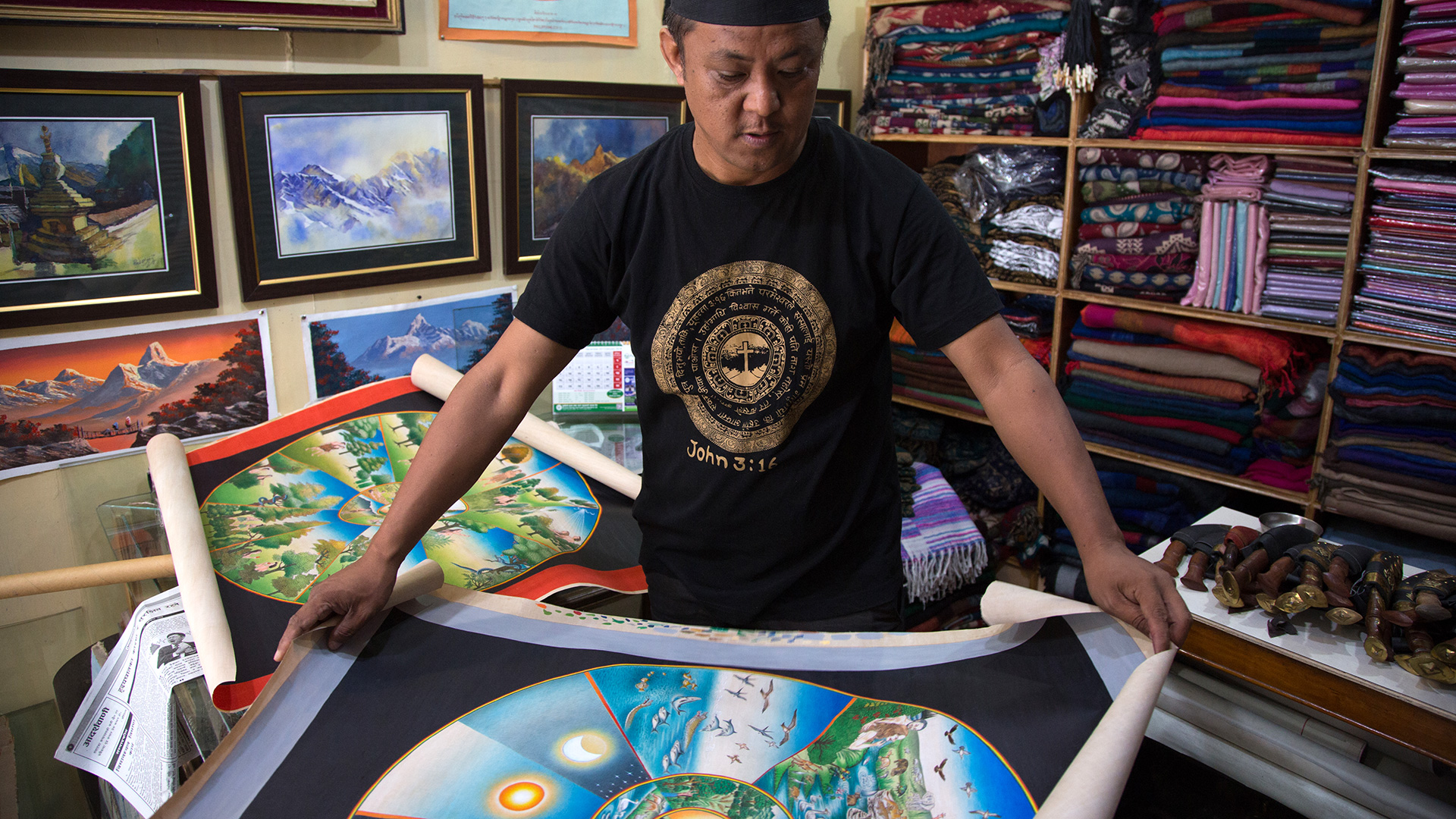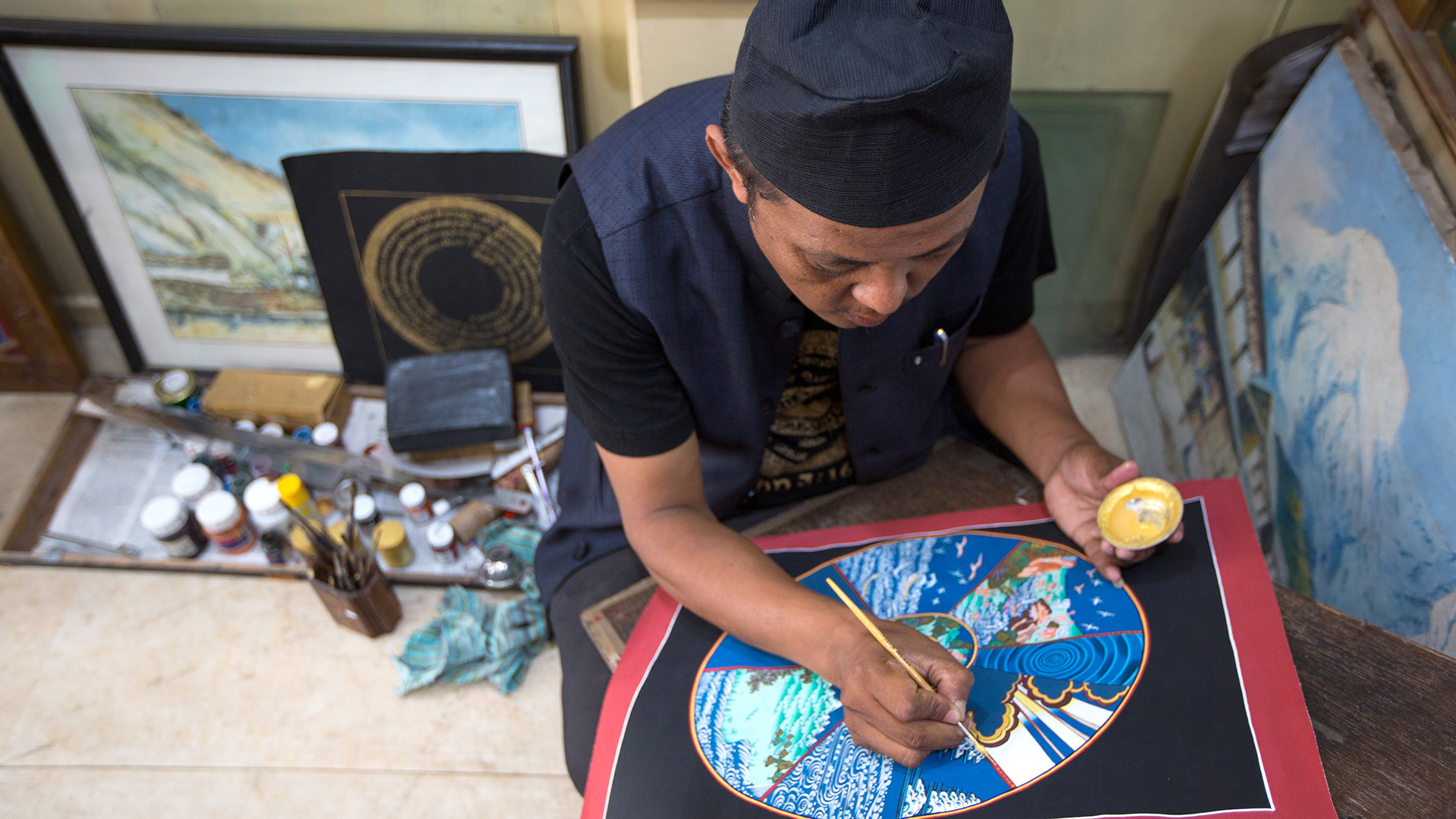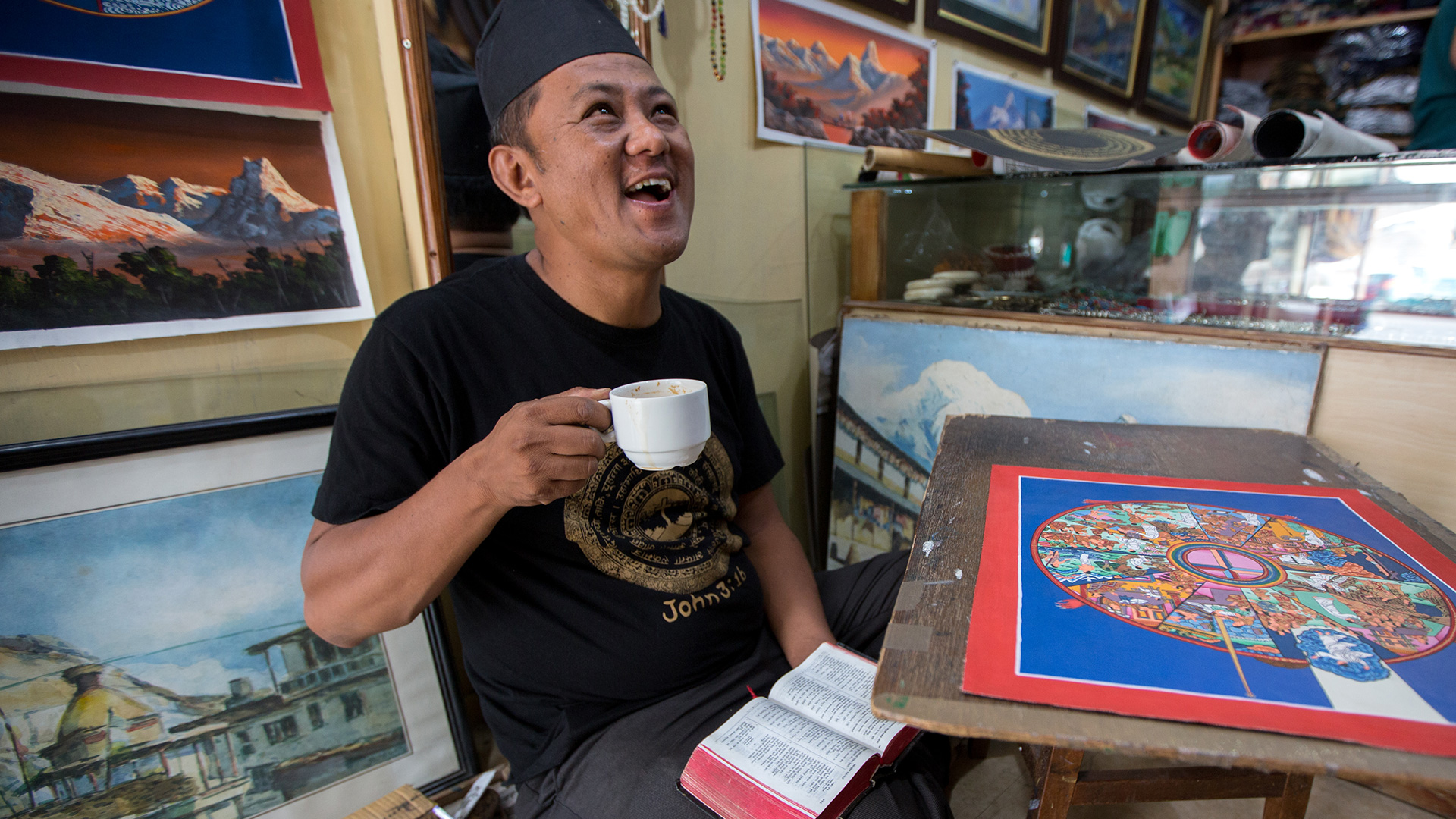Imagine your every action and thought affecting what or who you will be in the next life. Imagine living day in and day out needing your good works to outnumber your bad ones and not knowing with certainty that they will. That’s what it’s like to live feeling bound to the Buddhist cycle of reincarnation—expecting to return after death to live another life but not knowing if it will be better or worse than the previous one.
Harshil Tamang* once fashioned artwork depicting the traditional Buddhist understanding of existence. His work represented the recurring cycle of life while expressing a longing for an elusive escape from reincarnation to nirvana, the ultimate spiritual goal.
The paintings Harshil now creates, however, have an entirely different meaning. They show key events in Jesus’s life and ministry, how he overcame death, and how he provides atonement for sin.
The Buddhist Wheel of Life
As a sixteen-year-old, Harshil followed in his ancestors’ footsteps. Like his father before him, he learned to paint thangkas, Tibetan Buddhist paintings on cotton or silk. They portray a god, religious scene, or a mandala, a geometric design depicting elements of the universe.
The Wheel of Life painting is the most well-known thangka. It’s a visual representation of life, death, and rebirth for Tibetan Buddhists. For eighteen years, Harshil painted traditional thangkas and taught others to do the same.
One afternoon when I visited Harshil’s studio, he rolled open a painting and ran his finger clockwise around the Wheel of Life, pointing to each of the six realms into which Buddhists believe souls are born—or reborn. The wheel is held in the talons of the demon of death.
Harshil explains that Buddhists see themselves caught in the endless cycle of life, death, rebirth, and suffering. Exit from the haunted chambers depicted in the Wheel of Life depends on an individual’s unspecified amount of good karma and grace from the spirits. Buddhists see good karma as the key to breaking out of the cycle of reincarnation and reaching nirvana.

This Wheel of Life painting depicts the account of creation in Genesis.
Harshil learned he was never a part of that cycle, and he’d been granting it a power it never had over him. A Christian with an eye for art played a key role in Harshil’s journey to Christ. The believer came to Harshil with a request for a painting, and while the two talked he shared the gospel.
Eventually, the two men and a group of Buddhist artists gathered for an informal symposium to discuss their faiths. The artists reasoned with the believer, insisting that Buddha had given them painting thangkas as their purpose in life.
In response, the local Christian gave a compelling account of the gospel and how art fits into the human calling. “What we are doing, this is art—this is God’s gift,” he told them.
When Artwork Becomes a God
When Harshil’s grandmother passed away, a priest commissioned him to make a thangka to make merit on her behalf. Harshil asked his father about the symbolism of art created for the dead. The thangka is like a god, his father said, and making one was a way to serve his grandmother.
The idea that his artwork held god-like status stunned Harshil. He remembers wondering who his art made him if it was a god. If his art could work for salvation, who was he? He knew he was not more powerful than a god.
So his Buddhist faith waned. “There is no god in this universe. Man is god,” Harshil recalls thinking. “I am also god,” he declared.
Not long after making this bold claim, a storm struck and flooded his home and destroyed three hundred thangkas, representing months of work and rendering a devastating financial loss.
He wondered if the Lord was challenging his claim to divinity. Over time, the Lord used the continued persistence of a Christian believer, unconditional love from a local church, and some direct answers to prayer to graciously lead him to surrender his life to Christ.
Can a Christian Make Buddhist Art?
After coming to faith, Harshil asked his pastor if he could still paint thangkas. Art was, after all, his livelihood. The pastor hesitated, cautioning him not to treat art as the Lord in his life.

Harshil paints biblical stories in a traditional South Asian style.
He and his family were baptized and began maturing in faith, but he continued to paint Buddhist art. Other Buddhist artists called him out on the conflict between the content of his art and his new faith.
Convicted, he closed his shop, sold what he could at a heavy financial loss, and futilely pursued other options for employment. But his Buddhist artist friends wouldn’t accept that he’d left painting behind. They had another idea—they challenged him to make Christian artwork.
Re-envisioning the Wheel of Life
The Lord revealed that he’d been given a talent, and he could use his art to bring people to the cross. So Harshil began painting a Christian version of the Wheel of Life that depicts key events from Jesus’s life, death, and resurrection.
The Christian version depicts Jesus breaking out of the wheel and providing a path to heaven. The demon holding the world is vanquished behind Jesus’s life and ministry.

Christian Wheel of Life paintings spark conversation in Harshil’s studio.
Harshil wasn’t sure if anyone would buy his work, but he followed the Lord’s leading. After Harshil finished his first painting, a customer asked to hear the story. In the end, he bought the painting. The Christian thangka created a culture of conversation in his shop. People step through his door and ask why his painting is different.
He developed an original design based on the creation story in the Bible. The story intrigued his father, who is a painter and a local leader in the Buddhist community. His father has yet to believe, but Harshil holds out hope. After all, his journey to Jesus and escape from the ideology of reincarnation took time. So he continues to pray that his father will embrace the vision of a Wheel of Life that doesn’t keep turning but leads to eternal life in Christ.
*Name changed
Caroline Anderson is a writer with the IMB. She currently lives in Southeast Asia. Her childhood in Asia consisted of two important ingredients: braving hot chili peppers and telling people about Jesus.
Andrew Rivers and his wife serve with the IMB in Southeast Asia where he works as a videographer.

